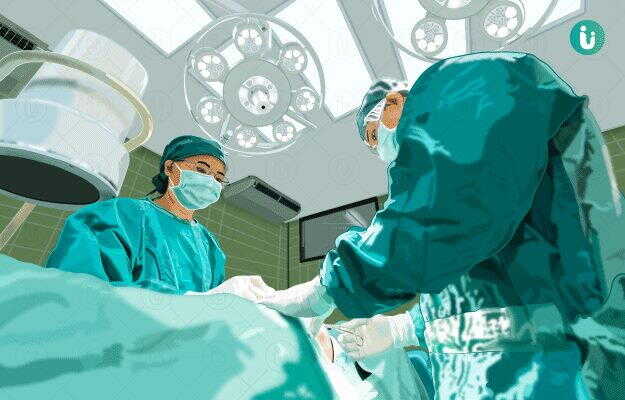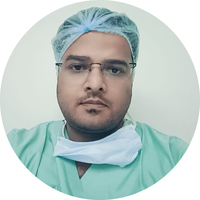There are two approaches to surgical management. They are:
1. Incision and drainage
This method is preferred if the infection is minor and the cyst has occurred for the first time. The patient is shifted to a minor procedure room where they are made to lie prone (flat on their stomach) on the procedure table.
The affected area is cleaned and covered with sterilised drapes. A local anaesthetic is injected to numb the area.
Using a scalpel (a sharp sterile knife) an incision is made in the cyst and the pus is drained. Draining the pus releases the cyst pressure and therefore reduces pain and inflammation.
The wound is cleaned and left open after packing it with medicated gauze. Surrounding hair follicles are removed to ensure better chances of non-recurrence.
Advantages: the procedure is done under local anaesthesia and is relatively quicker than cystectomy.
Disadvantages: the infection may not be eliminated completely from the cyst and hence chances of recurrence are common.
2. Pilonidal cystectomy
This surgery is preferred in more advanced stages where the infection is widespread or a discharging sinus(es) is present. The surgery is performed in the minor operating theatre (OT). The patient is told to fast overnight before the surgery.
Once admitted the patient changes into the hospital gown and is shifted to the OT. The patient is placed in the prone position on the operating table. A monitor is attached to monitor the vitals (heart rate, bp, saturation). An IV cannula is inserted through which general anaesthesia is given. Another option is regional anaesthesia where the lower half of the body is made numb.
The site of surgery is cleaned and covered with sterile drapes. Depending on the extent of infection and the nature of the sinuses (number and depth) the required amount of tissue is removed and the wound is properly cleaned.
If after excision the wound is small, it is then left open and packed with medicated gauze. If the wound is big then it is closed by sutures (stitches). In some cases when there are numerous sinuses, tissue from another location of the body may be used to form a covering (flap) and the wound is sutured. The entire surgery usually takes about 45min to 1 hour.
Advantages: the procedure ensures a better rate of removal of the cyst and sinuses, thereby reducing chances of recurrence
Disadvantages: since the wound is large the time required for healing is prolonged. Complications due to anaesthesia may occur.










































